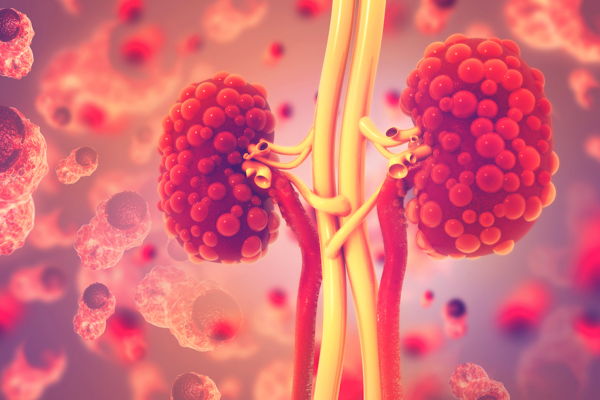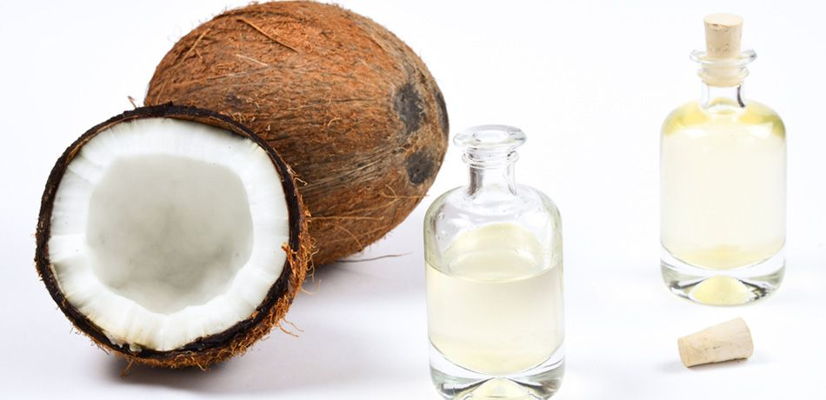14 Medical Benefits of Marijuana You Never Knew
Wednesday July 11, 2018 by Marianne Gutierrez 2,352 words
1. Is It a Cure-All?
No, but its thousands of years of use would suggest otherwise. There is so much evidence available concerning so many conditions, according to a paper written by Peter Reynolds in 2015 and published in the The British Medical Journal, that marijuana almost could be called that.
It is widely claimed that there is insufficient evidence to support medicinal use but this is not borne out by the facts, let alone 10,000 years of human history. In fact, there is so much evidence available for so many conditions that this paper is restricted to conditions for which cannabis appears to have the most beneficial effects.
f2.8 / shutterstock.com
2. Does It Help Anxiety?
The jury is out on this one. It may be that the full marijuana plant being smoked reduces anxiety, but cannabinoid shows that it can increase anxiety as well as decrease it.
Rich evidence has shown that cannabis products exert a broad gamut of effects on emotional regulation. The main psychoactive ingredient of hemp, Δ9-tetrahydrocannabinol (THC), and its synthetic cannabinoid analogs have been reported to either attenuate or exacerbate anxiety and fear-related behaviors in humans and experimental animals.
IQoncept / shutterstock.com
3. Can Gut Permeability Be Improved with Marijuana?
Commonly called a leaky gut, gut permeability is a cause of many inflammatory bowel diseases. A study in 2010 has shown promising results on the effect of cannabinoids and intestinal permeability, but it cannot suggest for certain that cannabinoids will reduce permeability because THC in cannabinoid also has the ability of increasing permeability.
…this study gives us an early indication of the pharmacological effects of cannabinoids on gut permeability. Further work is in progress to establish the role of cannabinoids on gut permeability in more physiological settings, such as an inflammatory setting.
Jan Mika / shutterstock.com
4. Crohn’s Disease
Crohn’s Disease is an inflammatory bowel condition — as is ulcerative colitis — that can deteriorate and rescind along the gastrointestinal tract.
The marijuana plant Cannabis sativa and its derivatives, cannabinoids, have grown increasingly popular as a potential therapy for inflammatory bowel disease (IBD).
Findings from human studies have resulted in an increase in publicity regarding the efficacy of cannabis use in IBD therapy.
As Peter Reynolds mentions in his paper: Medical Cannabis: The Evidence, cannabis has a long history of use and science can only test the efficacy of a substance one molecule at a time.
Herbs, including marijuana, are beneficial and produce good results when the whole herb is used, not one molecule.
Raw herbal cannabis cannot be regulated in the same way as single-molecule pharmaceutical medicines. Cannabis contains 400 – 500 individual compounds, including cannabinoids, terpenes and flavonoids, all of which work together in synergy to create ‘the entourage effect’. This is shown to be vital to the beneficial and therapeutic qualities of cannabis.
Relaxnews / www.ctvnews.ca
5. Nerve Pain
The cannabinoids (also found in marijuana) are what the body makes naturally for the nerve pathway system called the Endocannabinoid System, which is known as the “relax, eat, sleep, forget, and protect” system.
It has been shown that the cannabinoids in marijuana are accepted by the body to also make endocannabinoids, which are neurotransmitters.
A neurotransmitter is a chemical that is released at the end of the nerve fiber because of a nerve impulse. The nerve impulse needs to jump the gap (synapse or junction) and it is sodium from salt that does this. The neurotransmitter is then carried through the various nerve fibers (i.e. muscle fiber) to enact its function. In the case of endocannabinoids – the function of “relax, eat, sleep, forget, and protect”.
A neurotransmitter is a chemical substance which is released at the end of a nerve fibre by the arrival of a nerve impulse and, by diffusing across the synapse or junction, effects the transfer of the impulse to another nerve fibre, a muscle fibre, or some other structure.
Nerve cells that sense pain contain cannabinoid receptors. When marijuana with both THC and CBD is taken, the cannabinoids activate the body’s receptors (basically receptors are like doors on a cell, which allow things in and out). The cannabinoids can then regulate the nervous system, and reduce the sensation of pain.
However, if you suffer with any nerve pain condition, it would be prudent to consider eating certain nutrient rich foods to feed the natural endocannabiniods, as well as taking marijuana to relieve the pain. The nutrients required are zinc, magnesium, folic acid, vitamin E, curcumen, a terpine called Beta-caryophyllene found in herbs and spices including marijuana.
6. Alzheimer's Disease
Marijuana (aka cannabis) has shown improvements to the neural pathways in the brain, especially in Alzheimer’s disease. Cannabinoids are made in the body from proteins, minerals, vitamins, and animal fats. Dietary restrictions may have been a factor in reducing the amount of these and other neurotransmitters, and it may be a reason why the cannabinoids in marijuana have been shown to reduce the symptoms of Alzheimer’s.
Marijuana may be able to slow down the progression of Alzheimer’s disease also, according to a study led by Kim Janda of the Scripps Research Institute.
The evidence is strong that regular, moderate use of cannabis helps to delay the onset and progression of Alzheimer’s disease and other neurodegenerative conditions.
Jan Mika / shutterstock.com
7. Chronic Pain
Chronic pain is almost at epidemic proportions, affecting more than 100 million Americans alone. Chronic pain is defined as persistent pain that lasts longer than the normal healing time, or longer than 3 - 6 months. It is estimated that 20% of people worldwide suffer with long-term pain.
This review is one of a series on drugs used to treat chronic neuropathic pain. Estimates of the population prevalence of chronic pain with neuropathic components range between 6% and 10%. Current pharmacological treatment options for neuropathic pain afford substantial benefits for only a few people, often with adverse side effects that outweigh the benefits. There is a need to explore other treatment options, with different mechanisms of action for treatment of conditions with chronic neuropathic pain. Cannabis has been used for millennia to reduce pain. Herbal cannabis is currently strongly promoted by some patients and their advocates to treat any type of chronic pain.
Extracts of the hemp plant cannabis are traditionally used as a popular remedy against inflammation and pain. At the beginning of the last century this natural remedy was even available at every chemist’s. But due to the intoxicating effect of the component THC (tetrahydrocannabinol) the plant was taken off the chemist’s shelves in the 1930s.
Once again, science is proving what has been known for hundreds of years: marijuana helps reduce chronic pain. It is the cannabinoids in the plant that supplies the pain relieving effect, and it is thought that those in pain produce less of their own natural endocannabinoids from the foods they consume.
ChameleonsEye / shutterstock.com
8. Cancer
Smoking marijuana has reduced many symptoms associated with cancer treatments, including nausea, vomiting, and nerve pain. Marijuana tablets may also reduce the need for pain medication.
In animal studies, scientists found that marijuana and CBD kill certain types of cancer cells and may even slow the growth of cancer, researchers at California Pacific Medical Center in San Francisco reported in 2007.
More recently, scientists reported that THC and other cannabinoids such as CBD slow growth and/or cause death in certain types of cancer cells growing in lab dishes. Some animal studies also suggest certain cannabinoids may slow growth and reduce spread of some forms of cancer.
A 2014 study found that marijuana can significantly slow the growth of the type of brain tumor associated with 80% of malignant brain cancer in people. Still, these findings in cell cultures and animals don’t necessarily mean the effect will translate to people, and far more investigation is needed.
However, relying on marijuana alone as treatment while avoiding or delaying conventional medical care for cancer may have serious health consequences.
arloo / shutterstock.com
9. It Might Protect the Brain From Trauma
Lester Grinspoon, a professor of psychiatry at Harvard, wrote an open letter to the NFL’s commissioner, Roger Goodell, and suggested the league should stop testing players for marijuana and begin funding research into its ability to protect the brain from trauma and concussions.
“Already, many doctors and researchers believe that marijuana has incredibly powerful neuroprotective properties, an understanding based on both laboratory and clinical data,” - Lester Grinspoon
In addition, one study has already shown that patients who smoke marijuana are less likely to die from traumatic brain injuries.
Hemerson Coelho / shutterstock.com
10. Multiple Sclerosis
Numerous studies and trials have demonstrated that marijuana helps the pain of Multiple Sclerosis.
One in five people with MS we surveyed in 2014 told us they’d used cannabis to help with their symptoms. They said it can help with muscle spasms or stiffness (spasticity) and pain.
The pain relief is from the cannabinoids, plus the supporting compounds in marijuana. However, medical manufactured products, like Sativex, do not work for everyone. Sativex is also expensive and can be a doubly expensive treatment if it does not work. Sativex contains a little tetrahydrocannabinol (THC), but mainly cannabidiol (CBD).
Those with Multiple Sclerosis tend to find their own whole marijuana that contains all its natural compounds, not just THC and CBD. Perhaps this is why they find good relief for their nerve pain.
ann131313 / shutterstock.com
11. Parkinson's Disease
The terms medical cannabis and medical marijuana mean the same thing: CBD – Cannabidiol.
Studies of the human Endocannabinoid System have demonstrated the need for cannabinoids, which the body makes itself from a rich supply of nutrients. Cannabinoids are also found in the cannabis genus of plants. Cannabinoids make the neurotransmitter, endocannabinoids.
The supply — or lack of some neurotransmitters — are the cause of diseases of the nervous system, including Multiple Sclerosis and Parkinson’s, to name just two.
Levodopa is used to replace the lack of dopamine in Parkinson’s disease. Long-term use of Levodopa causes dyskinsia (abnormal or impairment of voluntary movement).
“Cannabinoids reduce the damaging effects of the Parkinson’s drug Levodopa.”
The studies of the use of medical marijuana/cannabis to reduce the symptoms of Parkinson’s are varied. Some studies clearly support its use, but the studies were also flawed as certain standards were not employed or too few subjects were used.
The use of cannabinoids has been suggested to help with managing neurological and non-neurological conditions. Literature on medical marijuana is incredibly varied. Studies have not clearly supported the use of marijuana for PD. The clinical studies of cannabis as a PD treatment that have been conducted did not use the clinical trial gold standard of a double blind, placebo controlled trial design. Some studies had as few as five subjects. While some results have been positive, the effects of medical marijuana are probably not completely understood, which is why more studies, especially those with more subjects, are needed. Most doctors don’t support study results because these studies do not meet minimum research standards.
solar22 / shutterstock.com
12. Post Traumatic Stress Disorder
A study in Neuropsychopharmacology suggests that drugs with cannabinoids may help those suffering with Post-Traumatic Stress Disorders (PTSD).
Our findings suggest that drugs potentiating endocannabinoid neurotransmission may represent promising tools when combined to exposure-based psychotherapies in the treatment of PTSD. Another study seems to suggest that there is no real conclusion of cannabis helping and there is a worry that overuse may potentiate the symptoms.
Post traumatic stress disorder is 1 of the approved conditions for medicinal marijuana in some states. While the literature to date is suggestive of a potential decrease in PTSD symptomatology with the use of medicinal marijuana, there is a notable lack of large-scale trials, making any final conclusions difficult to confirm at this time.
Photographee.eu / shutterstock.com
13. Helps with Hepatitis C Treatment Side Effects
Hepatitis C (HCV) is a virus that affects the liver. If left untreated, it can get worse and cause liver failure and death. There are medications available which will eventually get rid of the virus, but they have nasty side effects, such as nausea, fatigue, muscle aches, mouth ulcers, dry mouth, and headaches. It is these side effects that cause sufferers to stop taking their medication and not get rid of the disease.
In trials, marijuana has demonstrated that it reduces the side effects of the treatment protocol, and those who use marijuana go on to complete the treatment protocol and become virus-free.
Standard HCV therapy entails the use of two powerful drugs: interferon and ribavirin, over a period of months. Due to severe side effects from these drugs, many patients do not finish treatment, and as a result may develop chronic liver disease, cirrhosis or liver cancer.
Kateryna Kon / shutterstock.com
14. Epilepsy Treatment
The biggest breakthrough for medical marijuana is in the area of epilepsy where it is most effective in reducing life-threatening seizures.
Early evidence from laboratory studies, anecdotal reports, and small clinical studies over a number of years suggest that cannabidiol (CBD) could potentially help control seizures. Research on CBD has been hard to complete due to federal regulations and limited access to cannabidiol. There are also many financial and time constraints. In recent years, a number of studies have shown the benefit of specific plant-based CBD product in treating specific groups of people with epilepsy who have not responded to traditional therapies.
Alfie, six, of Warwickshire has a very rare form of the illness that causes up to 150 seizures a month. His mother Hannah Deacon said: “Today, for the first time ever in this country we have brought back THC oil through the airport legally, which is amazing.” She was allowed through London City Airport with the oil from Amsterdam.
Leafly.com / Canada Guide

16 Warning Signs of Lupus to Watch Out For
1. Unexplained Fever Lupus can affect everyone differently and some may have …


21 Features of Kidney Disease
1. Dizziness Kidney Disease is when the kidneys are not filtering blood …


Top 10 Foods to Nourish Your Thyroid
Did you know that the food you eat can affect your thyroid health? Some foods …


12 Facts About Your Borderline Personality …
1. It's Finally Classified As a Mental Illness Borderline Personality Disorder, …


12 Common Factors That Trigger Rosacea …
1. Makeup Some products used on the face and body or in the mouth ie: make-up, …


22 Common Symptoms of Type II Diabetes
1. Mood Changes Mood change is sometimes one of the first symptoms to suggest …
